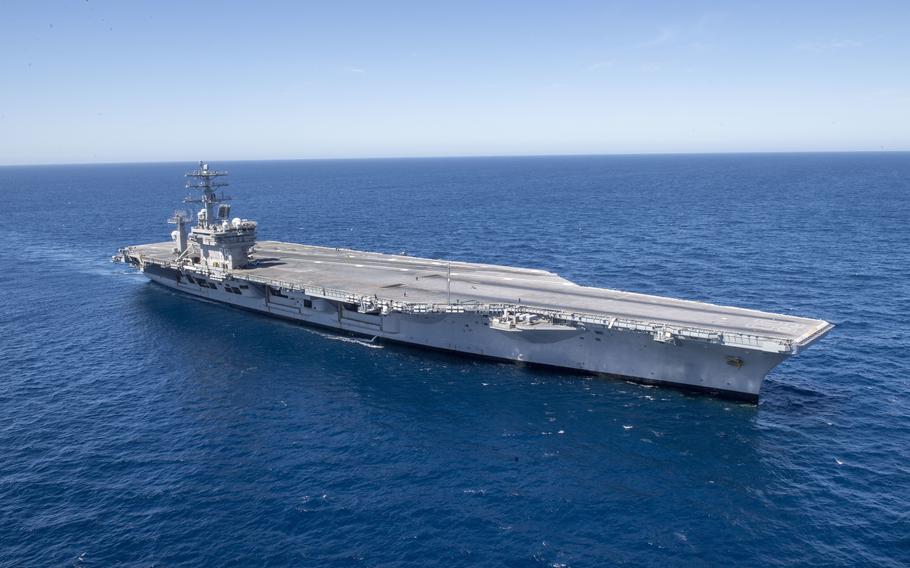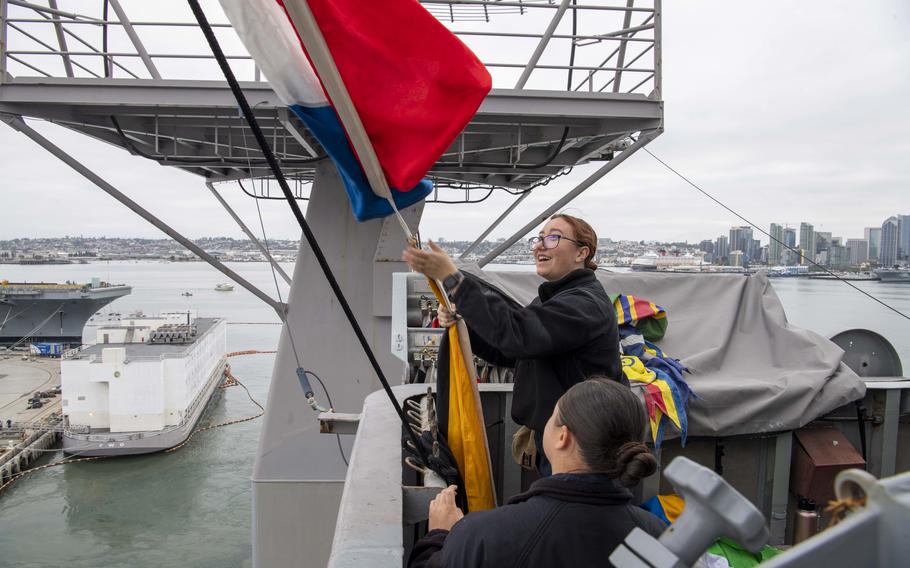
The aircraft carrier USS Nimitz cruises the Pacific Ocean, on March 12, 2022. Nimitz is once again underway after resolution of a problem with the potable water system suspected of sickening at least 11 sailors. The ship left San Diego on Oct. 2. (Samuel Osborn/U.S. Navy)
The USS Nimitz has left San Diego, ending a delay in port for repair of a water system contaminated by jet fuel, which is suspected of sickening at least 11 sailors assigned to the aircraft carrier.
Symptoms included skin rashes, headaches and diarrhea, which were reported beginning Sept. 17, a day after the contamination was found, as the ship transited the Southern California coast, Navy officials said.
At least 10 of the sailors were no longer experiencing symptoms as of Saturday, Cmdr. Sean Robertson, a spokesman for U.S. 3rd Fleet, said Sunday in an email to Stars and Stripes.
“All 11 sailors have received treatment and have been cleared for duty,” Robertson said, adding that the water on board is now safe to drink.
The ship left Naval Air Station North Island on Sunday and rejoined its strike group, he said.
“Nimitz got underway after all tests came back in limits and the potable water was determined to be safe for the crew,” Robertson said.

Seaman Gabriella Pantaleo hoists signal flags as the aircraft carrier USS Nimitz gets underway Oct. 2, 2022, in Coronado, Calif. (Samuel Osborn/U.S. Navy)
Sailors who experienced symptoms are still encouraged to seek a medical evaluation aboard the ship, he said.
The Navy did not say how jet fuel got into the water used for drinking, bathing and cooking. Officials also did not identify what steps they had taken to ensure that the water would remain safe to drink.
They also did not answer questions about how the Nimitz’s potable water system worked.
Testing Sept. 16 found jet propellant-5, or JP-5, in the ship’s water supply. The following day, the ship docked at NAS North Island and was connected to San Diego’s city water system.
About 1 million gallons of city water was used to flush the system, Robertson said Sunday.
But on Sept. 21, tests found trace amounts of jet fuel. That contamination was pinpointed to a single tank, which was taken offline. Three other nearby tanks also were isolated as a precaution, Stars and Stripes reported last week.
Over the weekend, officials said that 22 of the ship’s 26 potable water tanks passed tests. The remaining four tanks were those taken offline.
In all, an Orange County, Calif., laboratory certified by the state’s health department tested the ship’s potable water system 70 times since Sept. 21, Robertson said.
Also Saturday, 14 of 15 targeted areas on the ship passed water tests. One failed and was reflushed, the Navy said Saturday in a statement.
Targeted flushing was done in areas of the ship identified as having a medium-to-high level of odor, according to the Saturday statement.